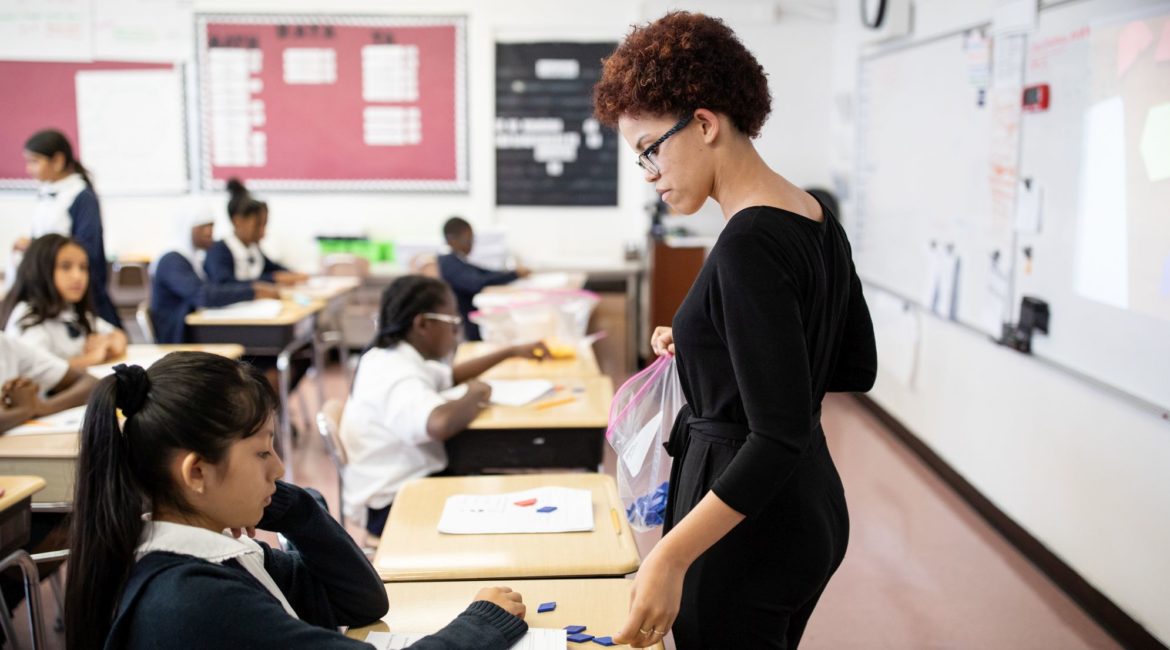We know that learning takes great care, is not a uniform process for all, and can be highly emotional. One simply must conduct a Google search to be faced with a myriad of learning styles, tips, and suggestions: an endless bucket of opinions and best practices. But, something most of us can agree on, regardless of the educational theories and thinkers we subscribe to, is that true learning requires a marriage between rigorous instruction and strong classroom culture. Why? Having a system rooted in consistency to hold students accountable reduces friction on a day-to-day basis, removes something from teachers’ (and students’) daily to-do list, and creates a more predictable environment, which is crucial for students who have unstructured and unpredictable home lives.
“Too often, culturally responsive teaching is promoted as a way to reduce behavior problems or motivate students, while downplaying or ignoring its ability to support rigorous cognitive development.” ― Zaretta L. Hammond, Culturally Responsive Teaching and The Brain: Promoting Authentic Engagement and Rigor Among Culturally and Linguistically Diverse Students
“…there is no academic rigor without high behavioral expectations, and order is the means, not the end” ― Doug Lemov, Teach Like a Champion
“To fulfill that mission, my teachers made sure they “knew” us. They knew our parents, our economic status, where we worshipped, what our homes were like, and how we were treated in the family.” ― bell hooks, Teaching To Transgress: Education as the Practice of Freedom
The above quotes by Zaretta Hammond, Doug Lemov, and bell hooks share the same message: in order to truly teach a child, one must know the child and set high behavioral expectations to support academic rigor. Simply put, an effective teacher is one who teaches more than the academic mind. She’s a teacher who knows that real learning requires a personal touch and excitement! BUT, how can teachers (especially new teachers) do this when their days are already so packed? Well, it’s not easy and can take quite a bit of work on the front end to set up, but it’s worth it. Take a look at the strategies below that might help:
Make expectations the means, not the end.
Academic rigor and sticky learning cannot occur without a strong class culture. But, creating a class with order, streamlining each micro-transition, and teaching students what is expected of them at each point in the day are only the start. Imagine that you begin the school year carefully teaching procedures for lining up, sitting down, turning in and passing out papers, sharing out in class, asking for help, working with a partner, and other aspects of the day. Would you be satisfied if you were teaching and reteaching the same procedures at the end of the year? Likely, no. If education is liberation, a big part of that liberation is releasing some of the onus to students. We should want them to become citizens who can use their best judgment to complete tasks and meet goals, trusting that we’ve shown them the way. And, honestly, are passing out papers, walking silently, and folding hands the life skills we’re trying to teach in the end? Likely not. By teaching these procedures through the mindset that they are the means to which we establish a learning environment that is rigorous, safe, and purposeful, not the end result, we’re establishing habits and procedures that allow us to do so much more. When these systems are consistently in place and scholars know exactly how to complete them, we have the time and capacity to teach incredibly engaging, exciting, and rigorous lessons in a way that is safe and effective.
Make an effort to know your students.
It feels good when your boss takes time out of her day to check in about how you’re doing, remember that funny story you told her, or congratulate you on growth you’ve made. Children are no different. It can be very easy to get so caught up in our own to-do lists that we fail to recognize that the students we teach have their own lives, own struggles, own battles they’re facing—but with much less qualification for handling them well. Often this is manifested as angry outbursts, crying, or shutting down. It’s our jobs as educators to not take these behaviors personally and use our resources to get to the root of the issue. Get to know your students and their triggers, just as they know you and yours in the classroom. To be clear, this does not mean lowering expectations of or becoming friends with students. Our students don’t need more friends (especially 20+ something year old friends) and our goal is not to be liked by them (Breathe. It’s okay if they don’t like you). Try having lunch with them and showing interest in the things they like, ask about their families and communities, allow them to have a talent show at the end of the day, and, above all, show them that you care about and see them as people and not just data. When I had my own class, I found that grounding everything in the why allowed my students to understand the values I had and why they were so critical to the men and women they should strive to be. For example, instead of thinking (and likely communicating) you’re always late which means you don’t care about your learning, try asking the student what mornings look like at home and truly trying to understand the barriers that are there in an effort to troubleshoot with the student/family. It doesn’t mean that you won’t hold them accountable for being on time in the future, but it does mean that the next time you do so, both you and the scholar are on the same page as to why.
Normalize errors as an opportunity by owning your mistakes.
Students, like adults, will make mistakes. Often, they’ll make the same mistake repeatedly. View these times as teachable moments. Be mindful of how you respond to both wrong and right answers in class. What message are you sending about learning and taking risks through your response? Do students feel embarrassed when they answer incorrectly? How do the other students in class react to a wrong/right answer? The answers to these questions paint a significant part of your class culture picture. What do you want it to look and feel like? Children often mimic what they see and hear around them. If their teacher, an adult they sometimes interact with more than their parents, makes it a point to apologize when she makes a mistake, imagine the impact that can have on their own perception of mistakes (no, actually imagine it). Conversely, if the adults in a child’s life are prone to expressing the “I’m the adult so I’m always right” way of dealing with mistakes, the child will likely adapt the same way of thinking. I also urge us to question why, as a society, we struggle to admit when we’re wrong or made a mistake to children. Is it our ego at work? Are we operating from a place of insecurity? If you hesitate at the idea of acknowledging your own mistakes in from of your classroom, explore why that might be. Getting to the root of your own anxieties about making mistakes will ultimately help you empathize with your students who feel a similar way.
Value student voices and perspectives.
If we want to create liberated global citizens, we must first empower our students by showing that we value them, just as they are. We employ empathy, compassion, and genuine learning to create culturally responsive classrooms. We teach our students that value is not earned by age, degree, career, or any of the common metrics society emphasizes daily. We teach our students to value themselves and their goals and we are closer to creating a generation that practices self-love, self-awareness, and resilience.
We cannot afford to lower our expectations of students in the communities we serve, but we also cannot expect students to immediately rise to meet them. We must play our role in this village by building up our students and giving them the tools of resilience, humility, and self-love. Only then can we experience the full potential of academic rigor.



